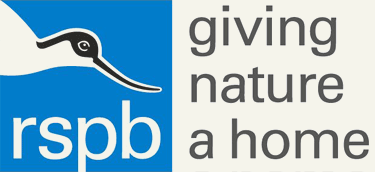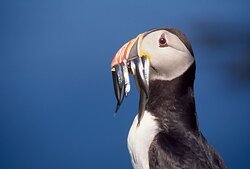RSPB at Sumburgh
 Shetland is a magnificent place for marine life, from whales to sandeels, and is home to large seabird colonies, and nationally important numbers of Whimbrel, Red-throated Divers and Red-necked Phalaropes.
Shetland is a magnificent place for marine life, from whales to sandeels, and is home to large seabird colonies, and nationally important numbers of Whimbrel, Red-throated Divers and Red-necked Phalaropes.
The RSPB has been involved in Shetland since 1904, and the first RSPB nature reserve was created in 1968, in Fetlar. They now manage a number of nature reserves across the isles, including Loch of Spiggie, Mousa, Fetlar, and, since 1996, Sumburgh Head.
Sumburgh Head is a special place for seabirds, particularly Puffins, which play a starring role on the ‘puffincam’. The work of RSPB Scotland here includes monitoring Puffins; they also deliver events and environmental education experiences. The Shetland office is here too, and, from 2015, there will be residential volunteering opportunities.
 Puffin with Sandeels, Chris Gomersall
As well as managing nature reserves, the RSPB works in the wider landscape, on international projects, contributes to scientific research, and campaigns, with their supporters, to get better protection for nature. RSPB Scotland has been campaigning for Marine Protected Areas (MPAs) in Scotland’s waters to protect the special species and habitats that are found here and to ensure their safety for future generations to cherish. The Fetlar to Haroldswick MPA and Mousa to Boddam MPA in Shetland are rich with wildlife, and the organisation seeks to ensure these precious sites are protected.
Puffin with Sandeels, Chris Gomersall
As well as managing nature reserves, the RSPB works in the wider landscape, on international projects, contributes to scientific research, and campaigns, with their supporters, to get better protection for nature. RSPB Scotland has been campaigning for Marine Protected Areas (MPAs) in Scotland’s waters to protect the special species and habitats that are found here and to ensure their safety for future generations to cherish. The Fetlar to Haroldswick MPA and Mousa to Boddam MPA in Shetland are rich with wildlife, and the organisation seeks to ensure these precious sites are protected.
Would you like to support the RSPB? Visit www.rspb.org.uk/supporting
The nature reserve at Sumburgh Head is open all year and is fully accessible at all times. Please visit the Sumburgh Head RSPB pages online for more information.
RSPB Scotland is part of the RSPB, the UK’s largest nature conservation charity, inspiring everyone to give nature a home. The Royal Society for the Protection of Birds (RSPB) is a registered charity: England and Wales no. 207076, Scotland no. SC037654
(page header image: Displaying Fulmars, Chris Gomersall)

